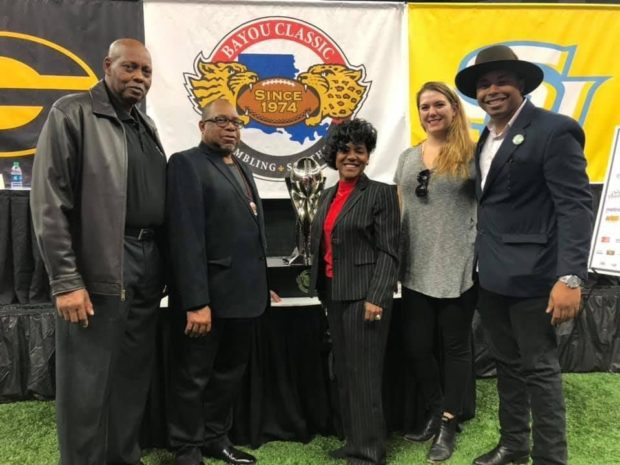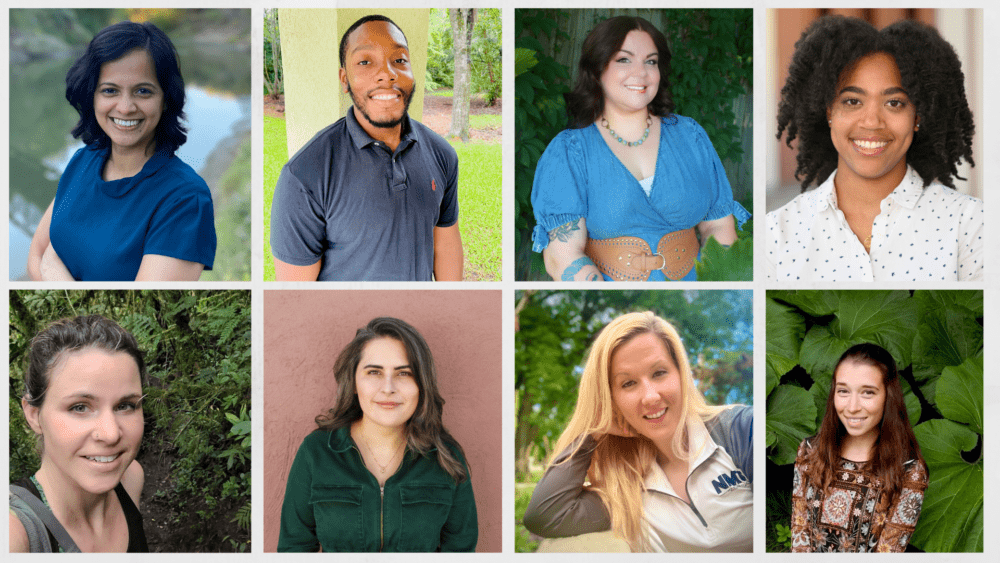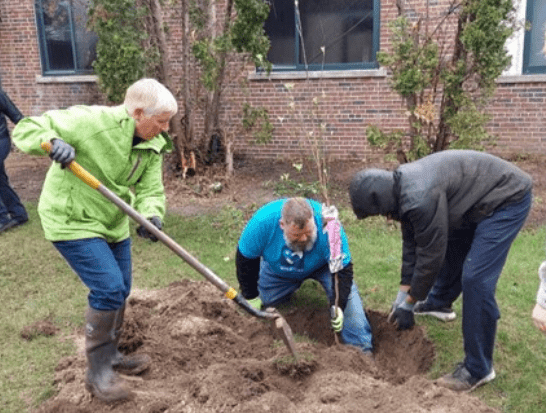We have much more to do and your continued support is needed now more than ever.
From the Swamp to the Superdome: Students Connect the Coast to the Big Game
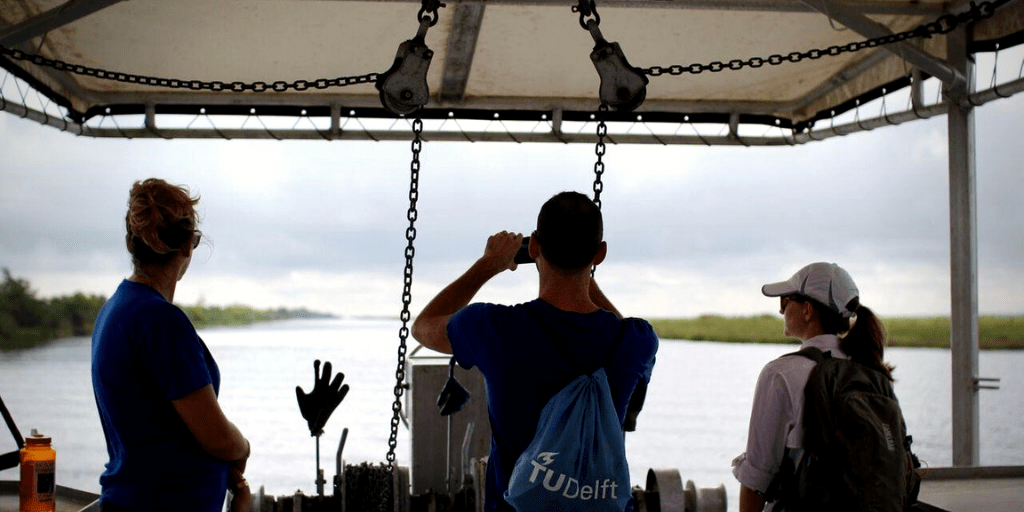
On a recent Sunday morning, sixteen students from Dillard University and the University of New Orleans joined us on a boat trip to learn about coastal land loss and flood protection in New Orleans. We live in a low-lying coastal city, with an extensive system of urban marshes and swamps that reinforce our levees, dampen storm surge, and provide crucial habitat for wildlife.
New Orleans has historically had a healthy wetland buffer both inside and outside its limits that protected it from storm surge. But the gradual sinking of wetlands, sea level rise, and saltwater penetrating from the Gulf of Mexico have caused significant land loss in the past century. This trip gave students a chance to learn about this history and develop an understanding of our city’s place in coastal Louisiana.
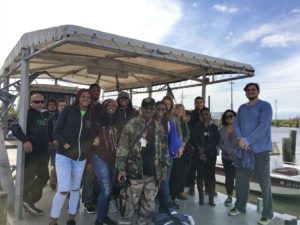
We began our trip at the Bayou Bienvenue wetlands platform in the Lower Ninth Ward, where we saw the remnants of the rich cypress forest that once protected the neighborhood from storms. Cypress forests used to cover much of Louisiana’s coastline. The ecosystem provided important habitat for migrating songbirds, land mammals, and other woodland wildlife. The trees themselves helped maintain Louisiana’s coast: cypress roots can stretch forty feet from the base of the tree, reducing soil erosion.
“Coastal restoration is important to me because I am from the great coastal state of Louisiana, St. Bernard Parish, better known as “The Parish.” We all know that we are losing much of our coastline every day. It is essential for us to preserve and restore it. The coast is very important to our state and local communities, including mine. We must protect it at all costs. It provides protection from storm/hurricane surges. I live here and I feel it is my responsibility to care about the changes that occur in my environment.” – Danielle Raphael, Dillard University
From there we departed for a marina in New Orleans East. We boarded an oyster boat and visited the Mississippi River Gulf Outlet channel, the Inner Harbor Navigation Canal, and the massive storm surge barrier at the eastern end of Bayou Bienvenue. These three features have played a key role in the city’s relationship with water. During Hurricane Katrina, storm surge from the Gulf was able to bypass the coastal wetlands that surround New Orleans, funneling water up the Mississippi River Gulf Outlet. The city’s levees couldn’t hold back the full force of the Gulf, and many of them failed. In the wake of the storm, the U.S. Army Corps of Engineers constructed the storm surge barrier to protect the city from the Gulf. In the shadow of this 28-foot wall, we talked about how these features in the landscape affect the city, and how coastal restoration can help reduce the city’s vulnerability.
“There are many benefits to maintain a healthy coastline. It protects coral reefs that are important for mangrove forests, filtering sediment from runoff and regulating water quality. I read about the importance for sequestering and storing carbon from the atmosphere in the wood and mud of the mangrove forests. When storms come through such as hurricanes, coasts are the first places to be flooded.” – Theodore Johnson, Dillard University
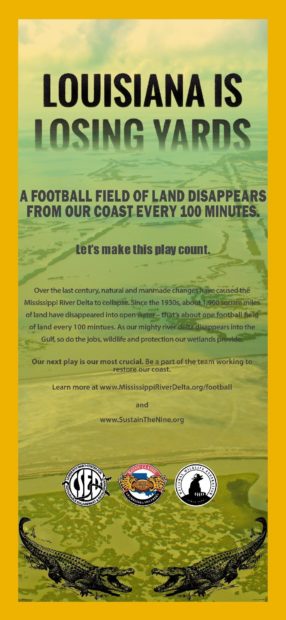
Following the field trip, The National Wildlife Federation and our community partners at the Lower Ninth Ward Center for Sustainable Engagement and Development helped sponsor the 45th annual Bayou Classic, the highly-anticipated football game between Southern University and Grambling State University held at the Mercedes-Benz Superdome. The game brings over 250,000 people to New Orleans, and 70,000 fans pack the Superdome. It is the number one classic among historically black colleges and universities, and the most attended football game in the FCS division.
Sponsoring the game offered us the opportunity to highlight coastal restoration issues to an enormous audience. Louisiana’s coast loses a football field of wetlands every 100 minutes, a message that resonated with the football-loving crowd. Our banners flew around on the arena’s big screens, explaining the urgent need for restoration, and we met the leaders of many of the institutions involved in the game. NWF is already planning more engagement opportunities with both the Grambling State Tigers and the victorious Southern University Jaguars as our work with historically black colleges and universities continues.
In addition to our digital presence at the game, The National Wildlife Federation sponsored three Dillard University students to attend, a result of our outreach to local universities. Louisiana students have a particular stake in coastal issues, as their ability to live, study, and work in the area will be, in large part, determined by our response to land loss. Students are also in a unique position to confront the problems facing the region as a result of sea level rise and climate change. They are able to study these issues, ask questions, and build solutions.
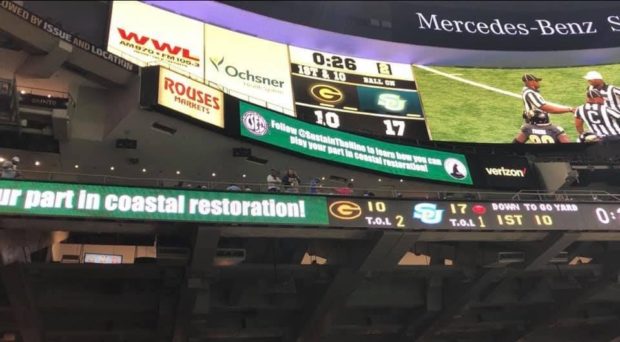
The field trip around New Orleans and our sponsorship of the Bayou Classic gave students an opportunity to see the challenges facing coastal Louisiana in a new light. With a deeper understanding of the urgent need for restoration, they are well-equipped to fight for our city’s future.
“We must maintain our coastline because coastlines are forever changing providing essential ecosystems for many life forms such as marine animals and plants. When coastal ecosystems are healthy, you will have very important services provided to the people in the surrounding area and worldwide.” – Justin Griffin, Dillard University
